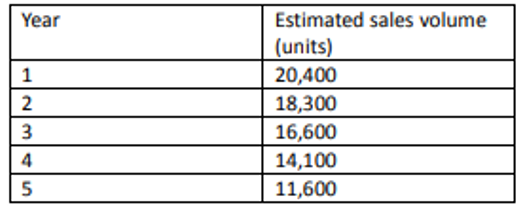Question
You are working in the finance department of MicroNet Technologies Ltd (MNT). TheCompany has spent $2.7 million in research and development over the past 18
You are working in the finance department of MicroNet Technologies Ltd (MNT). TheCompany has spent $2.7 million in research and development over the past 18 monthsdeveloping technology which will be incorporated into driverless sports cars. MNT now need tochoose between the following three options for bringing the product to market. These optionsare:
Option A: Manufacturing the product "in-house" and selling directly to the market
Option B: Licensing another company to manufacture and sell the product in return for a royalty
Option C: Sell the patent rights outright to the company mentioned in option B
Your task
Your manager, MNT's CFO, DrSarina Jones, has asked you to evaluate the three differentoptions and draft a memo to the Board of Directors providing recommendations on thealternatives, along with supporting analyses.
Dr Jones has outlined the following three (3) areas you need to cover in your memo:
1) Analyze base case figures for the three options and using NPV as the investment decision rule;
2) Provide recommendations based on the base-case analyses;
3) Provide recommendations on further analyses and discuss factors that should be considered prior to making a final decision on the three options (Note. You do NOT have to undertake any further financial analyses).
Further details for the various options are as follows:
Option A: Manufacturing the product "in-house" and selling directly to the market
Three months ago, MNT paid an external consultant $800,000 for a production plan and demand analysis. The consultant recommended producing and selling the product for five years only as technological innovation will likely render the market too competitive to be profitable enough after that time. Sales of the product are estimated as follows:

In the first year, it is estimated that the product will be sold for $35,000 per unit. However, the price willdrop in the following three years to $30,000 per unit and fall again to $25,000 per unit in the final yearof the project, reflecting the effects of anticipated competition and improving technology in the market.Variable production costs are estimated to be $27,200 per unit for the entire life of the project.
Fixed production costs (excluding depreciation) are predicted to be $2.9 million per year and marketing costs will be $1.4 million per year.
Production will take place in factory space the company owns and currently rents to another business for $1.5 million per year. Equipment costing $80 million will have to be purchased. This equipment will be depreciated for tax purposes using the prime cost method at a rate of 11% per annum. At the end of the project, the company expects to be able to sell the equipment for $14 million.
Investment in net working capital will also be required. It is estimated that accounts receivable will be 24% of sales, while inventory and accounts payable will each be 19% of variable and fixed production costs (excluding depreciation). This investment is required from the beginning of the project because credit sales, inventory stocks and purchases on trade credit will begin building up immediately. All accounts receivable will be collected, suppliers paid and inventories sold by the end of the project, thus the investment in net working capital will be returned at that point. (Refer to example provided in Assessment Details).
Option B: Licensing another company to manufacture and sell the product in return for a royalty
InoTech Ltd, a multinational corporation, has expressed an interest in manufacturing and marketing the product under license for 5 years. For each unit sold, InoTech will pay $180 royalty fees per unit to MNT as part of its licensing agreement. Due to InoTech's international reach and strong distribution networks, it is estimated that they can sell 2% more units each year than MNT.
Option C: Sell the patent rights outright to the company mentioned in option B
As an alternative to a licensing arrangement, InoTech Ltd has offered to buy the patent rights to the product design from MNT for $10 million. This amount would be paid in 4 (four) equal annual instalments, with the first payable immediately.
General Information Relevant to the Analysis
MNT's cost of capital is 15% and the company is subject to a 30% tax rate. Assume that royalties and patent right payments are treated as assessable income for tax purposes and that tax is paid at the end of the year in which the income is received. The company is not eligible for any research and development tax deductions. During the project analysis period(s), MNT is expected to have other sources of taxable income.
Year 1 234 2 3 4 5 Estimated sales volume (units) 20,400 18,300 16,600 14,100 11,600
Step by Step Solution
3.46 Rating (146 Votes )
There are 3 Steps involved in it
Step: 1
1 All sunk costs are to be ignored during the computation of NPV A sunk cost is a cost that has alre...
Get Instant Access to Expert-Tailored Solutions
See step-by-step solutions with expert insights and AI powered tools for academic success
Step: 2

Step: 3

Ace Your Homework with AI
Get the answers you need in no time with our AI-driven, step-by-step assistance
Get Started


